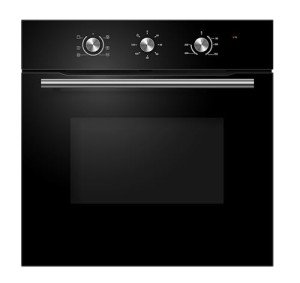The Comprehensive Guide to Built-in Ovens: Features, Benefits, and FAQs
Built-in ovens have actually ended up being a staple in contemporary kitchen areas, supplying benefit, style, and efficiency. Unlike standard freestanding ovens, built-in models are developed to integrate perfectly into kitchen cabinetry, consequently raising both the function and aesthetics of kitchen spaces. This article dives deep into the world of built-in ovens, discussing their features, benefits, installation factors to consider, and answers to frequently asked concerns.
What is a Built-in Oven?
A built-in oven is an appliance that is created to be set up straight into a wall or kitchen cabinets. This installation choice offers homeowners the ability to develop a tailored cooking area, taking full advantage of offered kitchen square footage while offering a smooth, expert look.
Secret Features of Built-in Ovens
Built-in ovens are packed with functions that deal with a range of cooking styles and preferences. Secret functions include:
| Feature | Description |
|---|---|
| Range of Cooking Modes | Choices such as convection baking, broiling, and self-cleaning modes to boost culinary flexibility. |
| Size and Configuration | Offered in numerous sizes and heights to fit specific kitchen layouts, ranging from compact to bigger units. |
| Design Options | Aesthetic options including stainless-steel, black stainless, and custom-made panels to match any kitchen decor. |
| Smart Technology | Many built-in ovens come geared up with Wi-Fi capabilities, making it possible for remote monitoring and control through smart device apps. |
| Multi-Functionality | Some models combine oven and microwave or consist of steam functions to create varied cooking options. |
Benefits of Built-in Ovens
The advantages of including a built-in oven into a kitchen style extend beyond mere visual appeals. Here are some noteworthy advantages:
1. Area Efficiency
Built-in ovens complimentary up counter top area by removing the need for a freestanding unit. Their combination into cabinetry permits a cleaner kitchen layout.
2. Boosted Visual Appeal
With sleek styles and personalized finishes, built-in ovens enhance the overall appearance of the kitchen, contributing to a more cohesive style.
3. Improved Cooking Performance
Lots of built-in models use sophisticated cooking technologies, such as convection cooking, which distributes hot air for even cooking, lowering cooking times and improving outcomes.
4. Convenience and Accessibility
Built-in ovens are frequently placed at eye level, making it easier to look at cooking progress, lowering the need to flex down, and boosting safety.
5. Increased Home Value
A well-designed kitchen with built-in appliances can substantially increase a home's value, making it more appealing to potential buyers.
Setup Considerations
When choosing and setting up a built-in oven, there are several aspects to think about:
- Kitchen Layout: It's necessary to prepare how the oven will suit the existing space, including cabinet heights and clearance requirements.
- Electrical and Ventilation Needs: Built-in ovens generally need particular electrical setups; guarantee that the kitchen adheres to local electrical policies.
- Professional Installation: Due to the intricacy of installation, employing an expert can guarantee that the oven is installed safely and correctly.
Types of Built-in Ovens
Built-in ovens come in various types, each suited for different cooking styles. Below are some of the most common:
- Single Oven: A traditional option for everyday cooking requirements, supplying adaptability for baking, roasting, and broiling.
- Double Oven: Offers two different cooking compartments, enabling simultaneous preparation of numerous meals-- a favorite for large households and those who amuse regularly.
- Wall Oven: These ovens are totally integrated into the wall and can be found in numerous designs, consisting of steam ovens and combination microwave.
Popular Brands of Built-in Ovens
A number of respectable brands provide premium built-in ovens, understood for their dependability and series of functions:
- Bosch: Known for smooth design and advanced cooking technology.
- KitchenAid: Offers innovative functions and multi-functional styles.
- Samsung: Integrates clever innovation with a modern visual.
- GE Appliances: Provides a variety of alternatives for various budget plans.
Frequently Asked Questions (FAQs)
1. How do I choose the right built-in oven for my kitchen?
When selecting a built-in oven, consider the size of your kitchen, your cooking design and frequency, the readily available budget plan, and any needed electric outlets or ventilation alternatives.
2. Are built-in ovens energy effective?
Lots of built-in ovens include energy-efficient technologies, such as much better insulation and accurate temperature level controls, which can lead to less energy usage compared to standard ovens.
3. Can I set up a built-in oven myself?
While some house owners may attempt DIY installation, hiring a professional is highly advised to guarantee safe and proper installation, especially concerning electrical connections.
4. What upkeep do built-in ovens need?
Routine maintenance includes cleaning up the oven exterior and interior, checking the seals for stability, and ensuring that any clever features or controls are updated as needed.
5. Do built-in ovens included guarantees?
Yes, the majority of reliable brand names use service warranties on their built-in ovens, normally covering parts and labor for a specified period. Make certain to inspect the details before purchasing.
Built-in ovens offer a mix of style, efficiency, and performance, making them a popular option for both modern and standard kitchen areas alike. With similar web page of features, setup, and upkeep, homeowners can improve their cooking experience while adding substantial worth to their homes. Whether selecting a single or double oven, the financial investment in a built-in model guarantees to transform the culinary landscape of any home.

